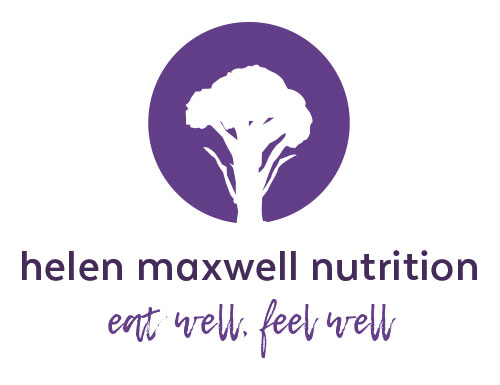Acid or Alkaline?
There are so many controversies in nutrition and one of these is the theory around the acid-alkaline balance of the diet. This blog explores the science and debate around this topic.
If you want to calculate the acid/alkaline of your meal ‘The PRAL’ (Potential Renal Acid Load) scale calculates how acid or alkaline a food is per 100g consumed. This scale is determined by measuring the pH of the ash remaining once the food has been burnt. It is however the subject of debate as the high temperatures used far exceed those of digestion and also burn off the sugar which is thought to cause acidity in the body itself.
The simple way to understand this topic is that alkaline forming foods include all vegetables especially spinach, all herbs and most fruit. Acid forming foods include all grains, cheese, meat, fish and peanuts as well as processed foods. Pure fats, sugars, and starches are neutral, because they don’t contain protein, sulphur, or minerals. A source of confusion is that some foods such as lemons and citrus taste acidic but have an alkalising effect on the body. Examples of highly alkaline vegetables are spinach, broccoli, kale, cucumber and parsley.
When we digest protein acids are produced however these are buffered by bicarbonate ions in the blood. This reaction produces carbon dioxide which is exhaled and also salts which are excreted by the kidneys. The kidneys produce ‘new’ bicarbonate ions which are returned to the blood. So as with most things in the body a cycle is created which enables the body to maintain blood pH within a range of 7.35 to 7.45. So whilst food is linked to acidosis through the potential to place a more acid or alkaline ‘load’ on your body, this is quickly resolved to maintain a stable blood pH.
It is important to keep in mind that sufficient protein intake is important for health generation as well as facilitating acid excretion. So a very low protein diet can in fact increase acidosis and have adverse health effects.
However if our body’s are in a constant acid-base disequilibrium this is a type of systemic stress. If compensatory mechanism’s diminish a persistent acidogenic diet may increase the likelihood of an H + surplus and lower levels of serum bicarbonate. The scientific term ‘acidosis’ refers to a process, a dynamic compensatory response not just a change in blood pH. Many health conditions such as osteoporosis, kidney disease and muscle wasting are associated with a chronic low-grade level of metabolic acidosis. Although the mechanisms are not fully understood it is thought that there is a trade-off for constantly countering the effect of acid foods. Over time this may deplete buffering reserves of alkaline minerals especially in bones and tax muscle, kidneys and endocrine systems.
Some researchers suggest our contemporary Western diet has a higher acid load relative to that of our ancestors. Minich and Bland (2007) suggest that the root of this may lie in the agricultural revolution, processed food and grain products and more recently popular diets such as Atkins and Paleo. The latter are high protein diets which increase our net dietary acid load. They are often accompanied by a decrease in the micronutrient and phytochemical intake from fresh fruits and vegetables.
However other researchers dispute these claims. For example the famous researcher and dentist Weston Price found the diet of primitive Eskimos to contain an acid/alkaline balance of 707:382. He was specifically interested in dental caries which in the modern Eskimo diet have increased from 0.9 to 130 per 1000 teeth, whilst the acid/alkaline diet balance reduced to 382:227.
What is clear is that our bodies strive to maintain homeostasis including normal blood pressure, normal blood sugar and normal blood pH.
If pH falls to below 7.35 then the body regulates acid-alkaline balance via the following:
- Chemical reactions generating or consuming H+ at the cellular level
- In the blood with bicarbonate and amino acids
- Systemically through the release of carbon dioxide (acidic) from the lungs and hydrogen ions from the kidney.
Patrick McKeown author of ‘The Oxygen Advantage’, points out that acid forming foods stimulate breathing to off load carbon dioxide via the breath. Metabolic bicarbonate buffering processes occur over several days whereas adjustment via the breath can occur within minutes to hours. However this stimulus can cause people to resort to mouth breathing rather than nasal in order to restore homeostasis within the body. This aspect of pH adjustment is often ignored in nutrition articles but it’s one of the key reasons I trained in the Oxygen Advantage technique. Unfortunately mouth breathing or over breathing via hyperventilation can quickly become habitual which can then result in pH moving in the opposite direction causing respiratory alkalosis (Brinkman and Sharma, 2021). Symptoms are wide and varied and can include: shortness of breath (dyspnea); fever; chills; peripheral edema; weakness; confusion; light headedness; dizziness; anxiety; chest pain; asthma; abdominal pain; nausea; vomiting or weight loss.
Similar to most things in life it seems to be about balance. Indeed Sagen Ishizuka (1851-1910, founder of the macrobiotic diet, linked the equilibrium of acid and alkaline foods with the Chinese ideas of Yin and Yang. Natural balance not radical consumption of either or.
For help with nutrition or breathing advice and training please call me on 07740 876233.
References
Brinkman, J.E. and Sharma, S. (2021) Respiratory Alkalosis; https://www.ncbi.nlm.nih.gov/books/NBK482117/
Cam Magazine (October, 2014); https://www.scientificwellness.com/blog-view/the-alkaline-diet-science--health-benefits-425
Minich, D.M. and Bland, J.S. (2007) Acid-alkaline balance: role in chronic disease and detoxification; Alternative therapies; 13(4).
McKeown, P. (2015) The Oxygen Advantage. Harper Collins, New York.
Robey, I.F. (2012) Examining the relationship between diet-induced acidosis and cancer; Nutrition and metabolism; 9(72).
Weston Price (1934) Acid alkaline balance by Dr, Weston A. Price; https://www.healingnaturallybybee.com/acidalkaline-balance-by-dr-weston-a-price
Helen Maxwell
07740 876233
Helen@helenmaxwellnutrition.co.uk
www.helenmaxwellnutrition.co.uk

